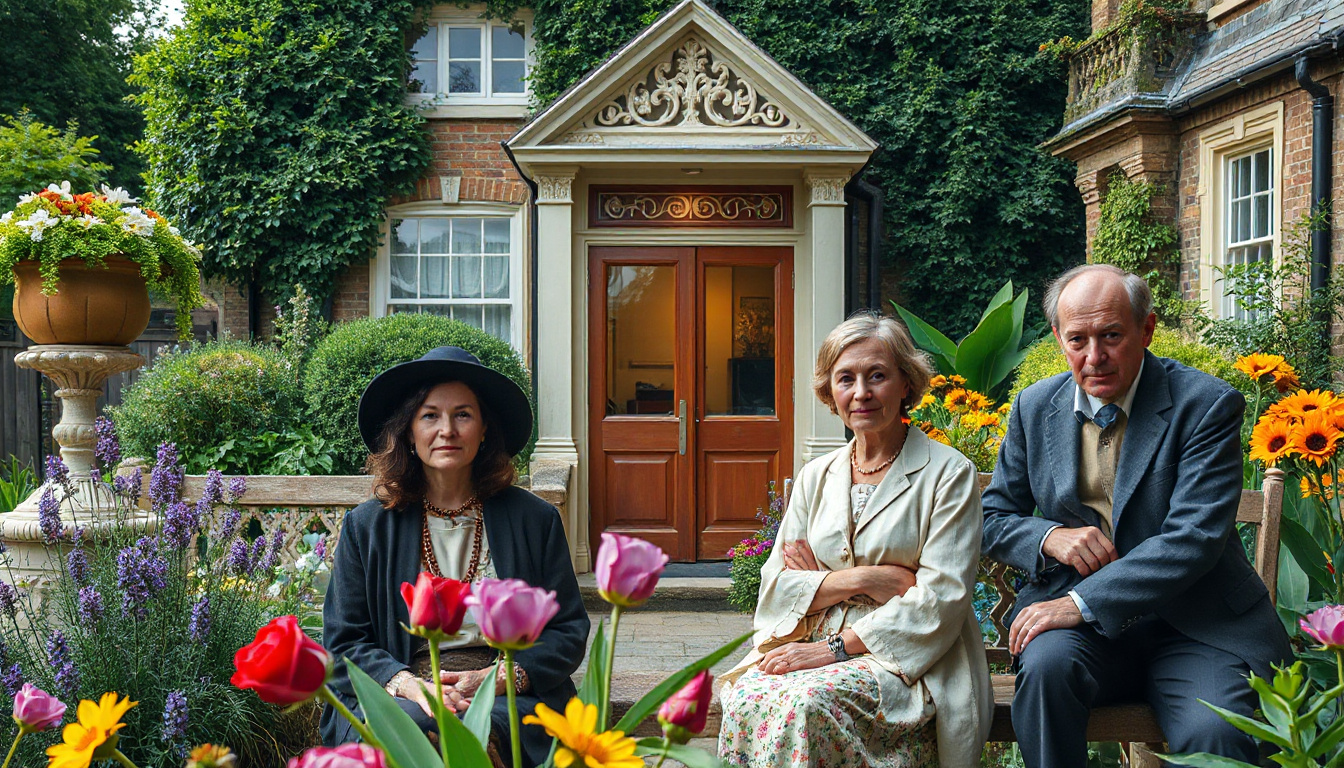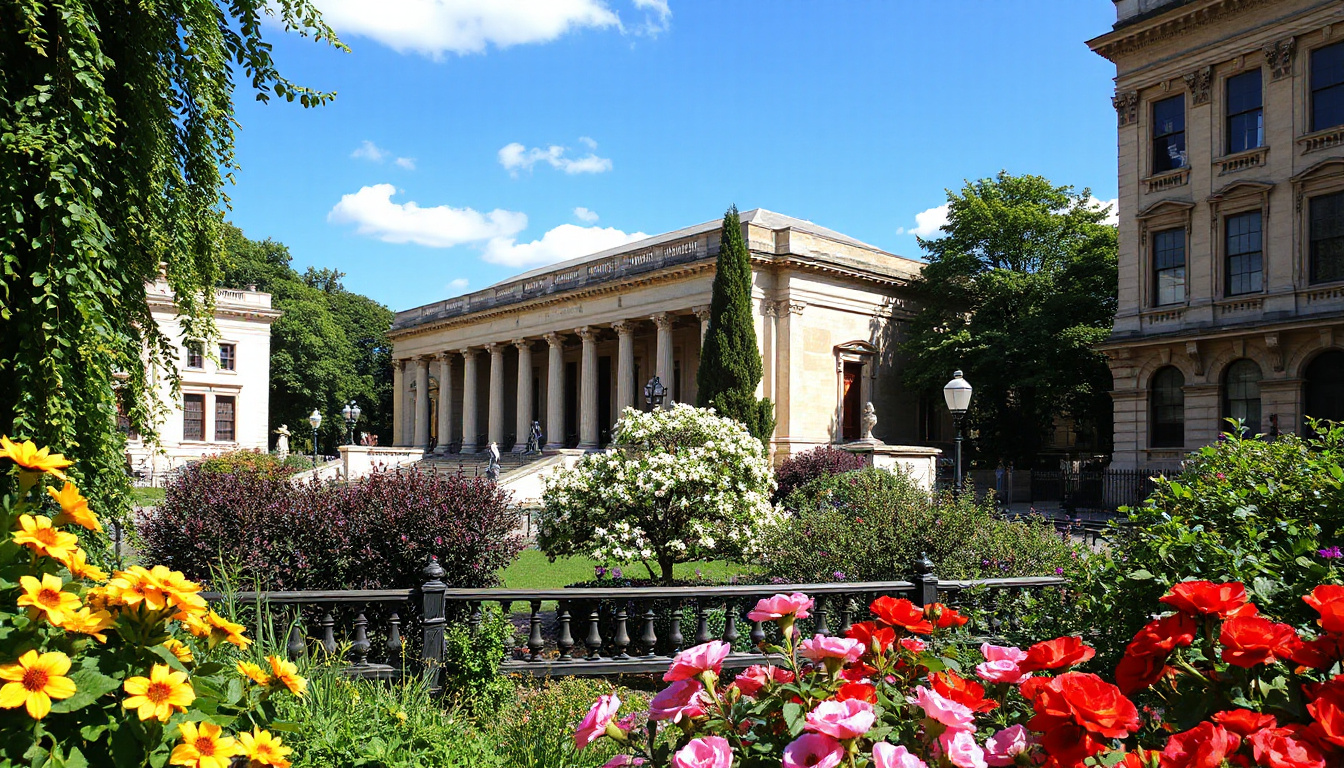Nestled in the heart of London, Bloomsbury is renowned for its rich cultural tapestry, vibrant intellectual history, and stunning architecture. At the forefront of its attractions is the world-famous British Museum, a monumental establishment that houses an incredible array of artefacts spanning millennia. Beyond the museum, the neighbourhood’s historic squares offer tranquil green spaces and glimpses into the past, making Bloomsbury’s British Museum and Historic Squares a must-visit for anyone exploring the capital. In this article, we will delve into the treasures of the British Museum, the charm of Bloomsbury’s squares, and the cultural significance that this area harbours.

Key Takeaways
- The British Museum houses a vast collection of historical artifacts from around the world.
- Bloomsbury’s historic squares offer a picturesque setting that reflects the area’s rich history.
- Visitors can enjoy the architectural beauty and serene environment of several iconic squares in Bloomsbury.
- Bloomsbury has played a significant role in London’s literary and cultural heritage throughout history.
- Exploring Bloomsbury provides insights into both its artistic influence and social history.
Exploring the Treasures of the British Museum
The British Museum, located in the heart of Bloomsbury, is a treasure trove of art and history, housing a vast collection of objects from around the world. Established in 1753, it was the first national public museum in the world, dedicated to human history and culture. Visitors can explore various exhibitions that span centuries, with notable highlights including the Rosetta Stone, the Elgin Marbles, and the Egyptians mummies. Beyond its remarkable collections, Bloomsbury offers a picturesque array of historic squares, such as Russell Square and Bloomsbury Square, perfect for a leisurely stroll after your museum visit. The area’s rich literary history includes illustrious figures like Virginia Woolf and Charles Dickens, which adds an enchanting layer to the experience. For anyone looking to immerse themselves in culture, Bloomsbury’s British Museum and its historic squares present an unrivalled opportunity. To learn more about the British Museum’s current exhibitions and events, visit their official website [here](https://www.britishmuseum.org) and for additional insights into Bloomsbury and its historic significance, check out the [English Heritage](https://www.english-heritage.org.uk.) resources.
The Charm of Bloomsbury’s Historic Squares
Bloomsbury, a vibrant neighbourhood nestled in the heart of London, is renowned for its rich cultural heritage and historic charm, particularly epitomised by Bloomsbury’s British Museum and historic squares. Stepping into this iconic district feels like wandering through the pages of history, with its elegantly designed gardens and squares, such as Russell Square and Tavistock Square, each boasting distinct character and stories to tell. These squares have served as social gathering spots for centuries, frequently filled with locals and tourists alike seeking respite from the bustling city life. Moreover, the British Museum, located right in the midst of these historic squares, is not only a treasure trove of world art and artefacts but also a significant landmark that draws millions of visitors each year. As you meander through the landscape of Bloomsbury, the interplay between the timeless architecture and the vibrant atmosphere is palpable, making it an essential stop for anyone hoping to appreciate the historical tapestry of London. For more insights into the cultural significance of Bloomsbury’s British Museum and historic squares, you can explore resources such as [Visit London](https://www.visitlondon.com), [The British Museum Official Site](https://www.britishmuseum.org), and [English Heritage](https://www.english-heritage.org.uk).
‘A museum should be like a book; it should tell a story, not just exhibit history.’ – Anonymous

Cultural Significance and Historical Context of Bloomsbury
Bloomsbury, a vibrant district in central London, is renowned not only for its academic institutions and literary heritage, but significantly for its cultural landmarks, particularly the British Museum and its historic squares. The British Museum, established in 1753, houses a comprehensive collection of world art and artifacts, making it a cornerstone of global cultural heritage. Its iconic neoclassical architecture and the magnificent Great Court showcase not only art but also the intellectual spirit of the Enlightenment. Meanwhile, the historic squares of Bloomsbury, such as Russell Square and Tavistock Square, provide tranquil oases steeped in history. These squares, developed during the 18th and 19th centuries, served as community hubs and reflect the district’s transition from a rural area into a centre of learning and culture. Together, Bloomsbury’s British Museum and historic squares demonstrate the area’s significant role in shaping London’s cultural landscape. As such, they continue to attract millions of visitors each year, promoting an ongoing dialogue about art, history, and the evolution of urban public spaces. For those wishing to explore Bloomsbury’s rich tapestry, it’s crucial to appreciate how these landmarks not only preserve historical narratives but also invigorate contemporary cultural discussions, as evidenced by recent exhibitions at the British Museum that delve into themes of colonialism and global interaction (The Guardian, 2022). This ongoing cultural relevance ensures that Bloomsbury remains a focal point for both historical inquiry and modern artistic expression.




